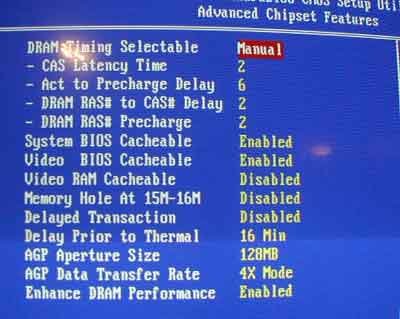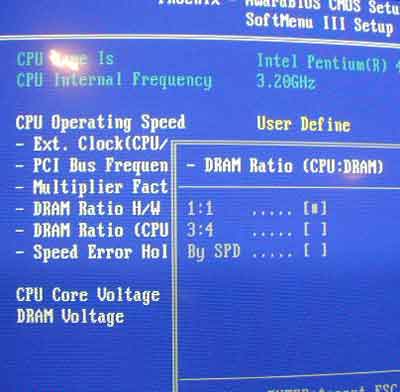I often get e-mails from readers asking me how to increase their 3DMark score
or tweak their computer to be faster. Today I'm going to be spilling my
guts on how I got 18608 3DMarks with a relatively slow system. First here are the
complete system spec's.
| pcstats
test system specs: |
|
|
computer hardware:
|
|
| processor: |
pentium 4 2.66 ghz |
| clock
speed: |
20 x 133 = 2.66 ghz
20 x 158 = 3.17 ghz |
| motherboards: |
abit bg7* |
| chipset: |
intel i845g |
| videocard: |
ati
radeon 9700 pro |
| memory: |
256mb geil pc3500 |
| hard
drive: |
40gb maxtor
d740x |
| cdrom: |
nec 52x cd-rom |
| floppy: |
panasonic 1.44mb floppy drive |
| heatsink: |
avc sunflower |
| powersupply: |
enermax 550w |
| software
setup |
windowsxp build 2600
intel inf 4.00
beta ati 6193
rage3d tweak |
| benchmarks |
3dmark2001se |
* - bg7 defaults memory timings to 266 mhz mode while
running 133 mhz fsb.
after a
fresh install of windowsxp professional with a completely stock non
tweaked system, i only score a measly...

Not bad for a completely stock system, but it's
pretty far from 18k.
Now I'm
going to reboot the computer so I can go into the BIOS. There, I change
the memory timings from 2.5-7-3-3 (CAS Latency - Act To Precharge Delay - RAS To CAS
Delay - RAS Precharge) which are SPD settings to 2-6*-2-2 and I enabled
Enhance DRAM Performance. *setting the Act To Precharge Delay to 5 can cause
severe stability problems if your memory is not high quality.

There's
a picture so you
can see what BIOS memory timings look like.
They're may be arranged in different orders depending on what motherboard you're using. In
general, you want all the settings (numbers) to be at the lowest value.

As we can see, by forcing the memory to run with aggressive
timings nets us a gain of just under 500
points!
The next thing I do is enable a 3/4 memory divider
which the Abit BG7 (i845G) unofficially supports.

Let's check out what performance boost
we'll get now.

To be honest the performance gain is not as big as I would expect. We only gained about 150 points
by running the memory faster.

